Blogs

What is the Strength to Weight Ratio of Titanium? A Comprehensive Overview
Introduction
Titanium stands at the forefront of modern materials, celebrated for its unique combination of strength, lightweight nature, and exceptional corrosion resistance. As industries continue to evolve, the demand for materials that can withstand extreme conditions while enhancing performance has never been greater. In sectors such as aerospace, automotive, and medical devices, titanium’s remarkable properties not only contribute to significant weight savings but also ensure durability and reliability in critical applications.
This article delves into the multifaceted advantages of titanium, exploring its impressive strength-to-weight ratio, diverse industrial applications, and the ongoing developments that position it as a material of choice for forward-thinking professionals. As procurement managers navigate the complexities of material selection, understanding the strategic significance of titanium is essential for achieving optimal outcomes in high-performance projects.
Understanding Titanium: Properties and Significance
Titanium, a transition metal, is distinguished by its exceptional strength, low density, and remarkable corrosion resistance, with a density of approximately 4.5 g/cm³. This value is significantly lower than that of steel, yet this metal maintains similar strength, making it an ideal option for situations where weight reduction is crucial without compromising structural integrity. Its unique properties are particularly valued across industries such as aerospace, automotive, and medical devices, where the ability to endure extreme conditions and demonstrate biocompatibility is essential.
Comprehending these traits is essential for evaluating the strength to weight ratio of titanium, a crucial aspect in material selection for high-performance applications. Recent advancements in this metal’s corrosion resistance further enhance its appeal, ensuring its growing presence in cutting-edge sectors. Notably, about 50% of the cost of these products is related to machining, a significant consideration for procurement managers.
Additionally, the case study titled ‘Applications of Titanium in Aerospace and Military’ highlights real-world examples of the strength to weight ratio of titanium and its desirability in these sectors. Recent news highlights the exceptional capabilities of this metal in military and aerospace sectors, emphasizing its significance in these vital fields. As the price of the metal continues to drop, influenced partly by enhanced production efficiencies, its use across diverse sectors is expected to grow, reinforcing its status as a favored substance in challenging uses.
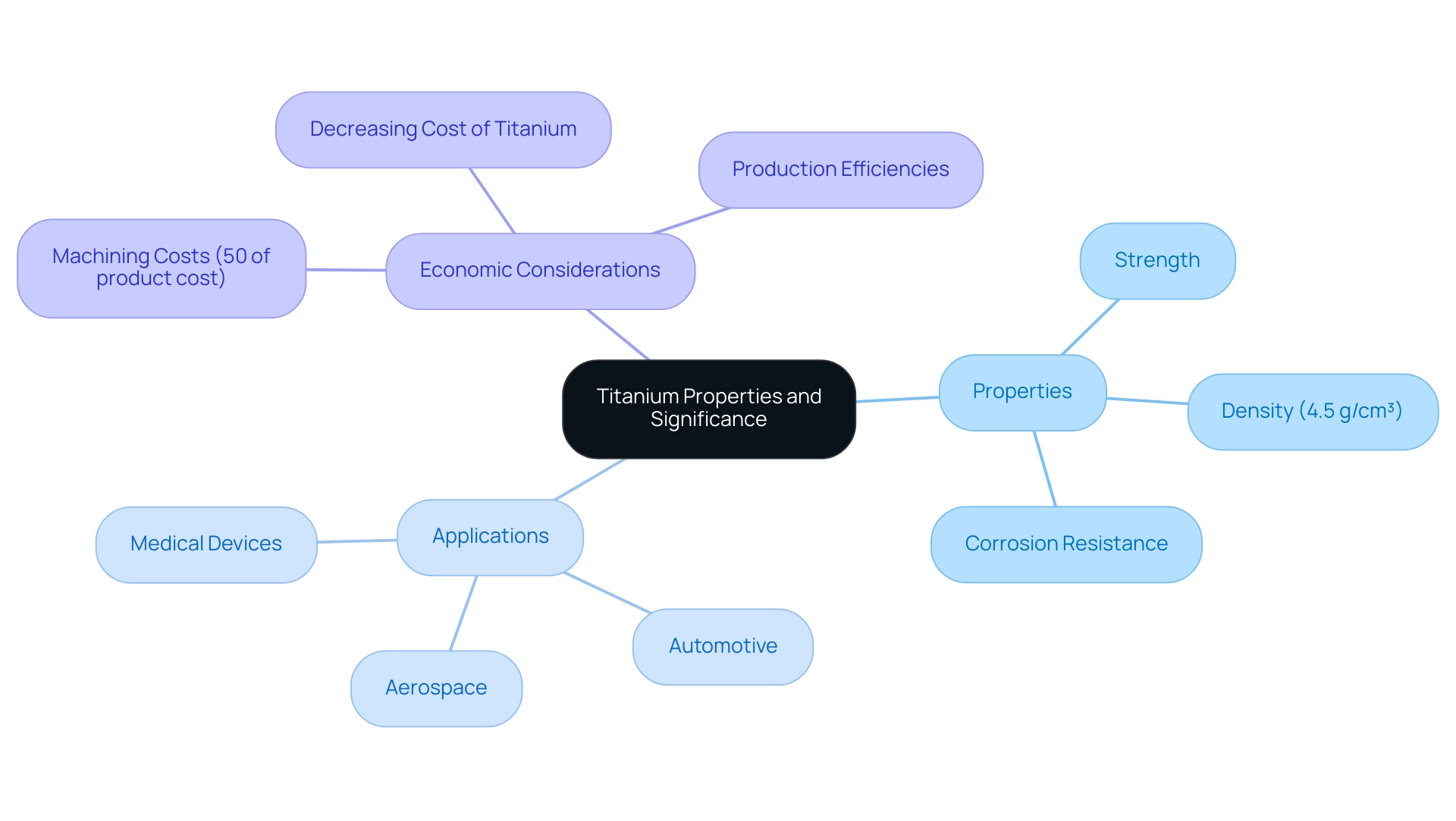
Exploring the Strength-to-Weight Ratio of Titanium
Titanium boasts an impressive strength to weight ratio of titanium, approximately 60,000 psi per pound per cubic inch, positioning it as one of the most efficient materials for various uses. This remarkable characteristic is particularly advantageous in the aerospace sector, where reducing weight translates into significant fuel savings and enhanced operational performance. For instance, this metal is frequently utilized in critical aircraft components, allowing for the design of thinner and lighter parts without compromising safety standards.
In comparison, aluminum, which offers a lower strength-to-weight ratio, falls short in demanding environments where durability is paramount. Furthermore, the automotive sector has acknowledged the metal’s potential; its use in high-performance vehicles assists in weight reduction, leading to enhanced speed and fuel efficiency. Comprehending the strength to weight ratio of titanium is essential for engineers and procurement specialists, as it directly impacts material selection and the overall success of engineering projects.
As Ti-Tek states, ‘For more information on the differences between the various grades of this metal, give us a call today on 0121 382 4121 to chat with one of our experts directly.’ Additionally, the corrosion resistance of this metal makes it ideal for marine applications, as demonstrated in the case study titled ‘Marine Applications: Seeking Corrosion Resistance,’ where it is utilized in boat hulls, propellers, seawater desalination equipment, and offshore oil and gas platforms. As we approach 2024, ongoing advancements in the metal sector continue to confirm its strategic significance in aerospace fuel efficiency, establishing it as the preferred option for forward-thinking professionals.
For additional questions, procurement managers can reach Friend Metals Co at 714-632-0140 or 800-854-6777, or get in touch with Ti-Tek via email at info@titek.co.uk or call 0121 382 4121 for support with their metal requirements.
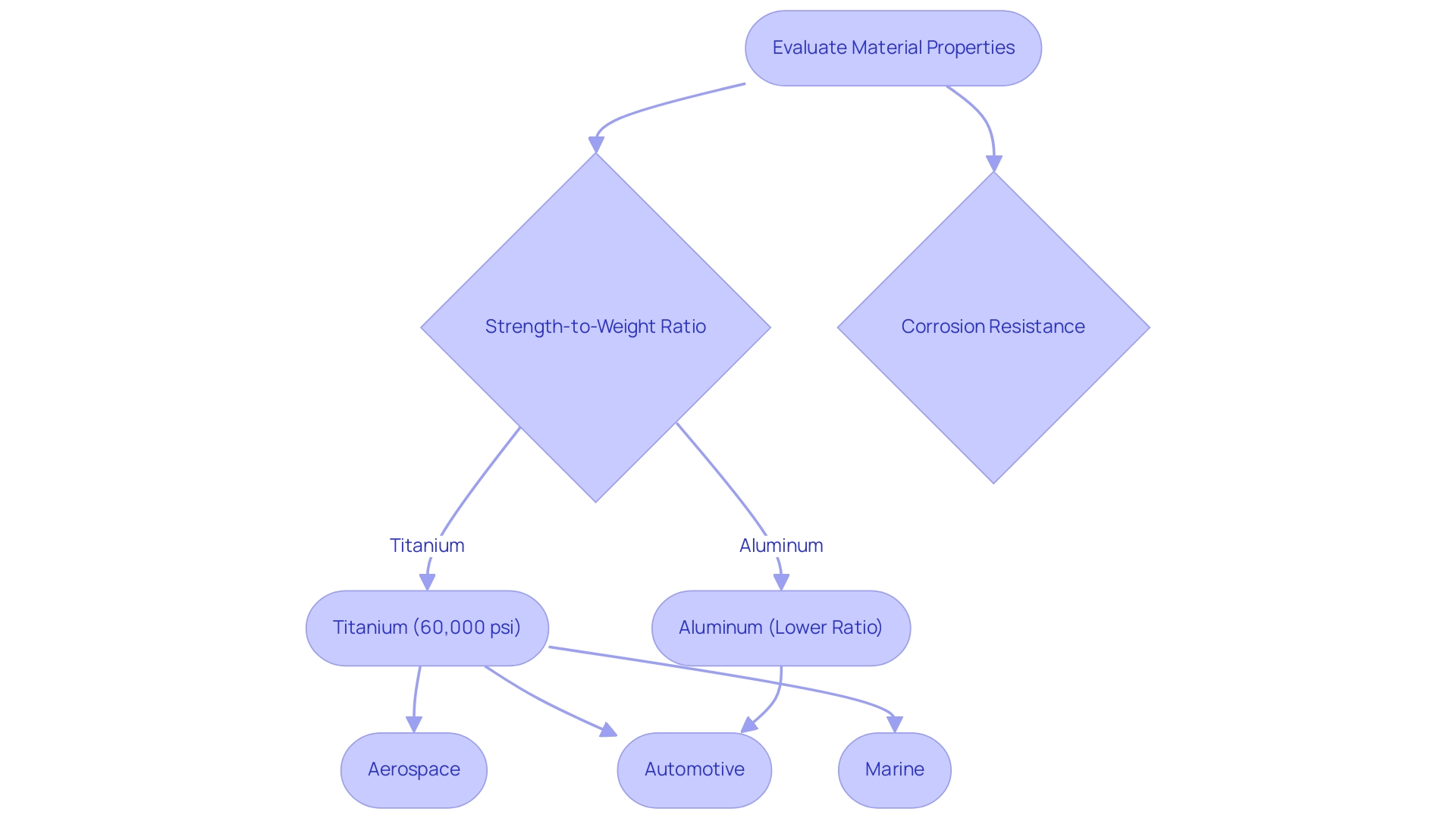
Applications of Titanium in Industry
Titanium’s exceptional properties make it a material of choice across a multitude of industries. In aerospace, alloy components are indispensable for aircraft structures, engine parts, and fasteners, where weight savings can lead to significant performance enhancements. For example, commercially pure grade 2 and the Ti-6Al-4V grade 5 alloy are extensively used in biomedical fields, with these grades representing over 95% of biomedical devices made from this metal, as indicated in recent studies.
Moreover, physisorption and chemisorption techniques can immobilize growth factors on metal surfaces, promoting cell attachment and proliferation, which is crucial in medical applications. In the automotive sector, a strong metal is increasingly found in high-performance vehicles, especially within exhaust systems and suspension components, where the dual demands of durability and weight reduction are critical. The medical field further underscores the metal’s value, favoring it for implants and surgical instruments due to its biocompatibility and corrosion resistance—essential for ensuring long-term performance within the human body.
Alex Lanzutti, an Assistant Professor in Mechanical Engineering at Udine University, emphasizes that the metal’s applications extend beyond biomedical uses, affecting sectors such as energy production and aerospace. This highlights the material’s versatility and importance in various sectors. Furthermore, the chemical processing sector gains from the strong resistance of this metal to aggressive substances, rendering it perfect for heat exchangers and reactors.
These varied uses highlight the importance of the strength to weight ratio of titanium in meeting performance and safety standards across sectors.
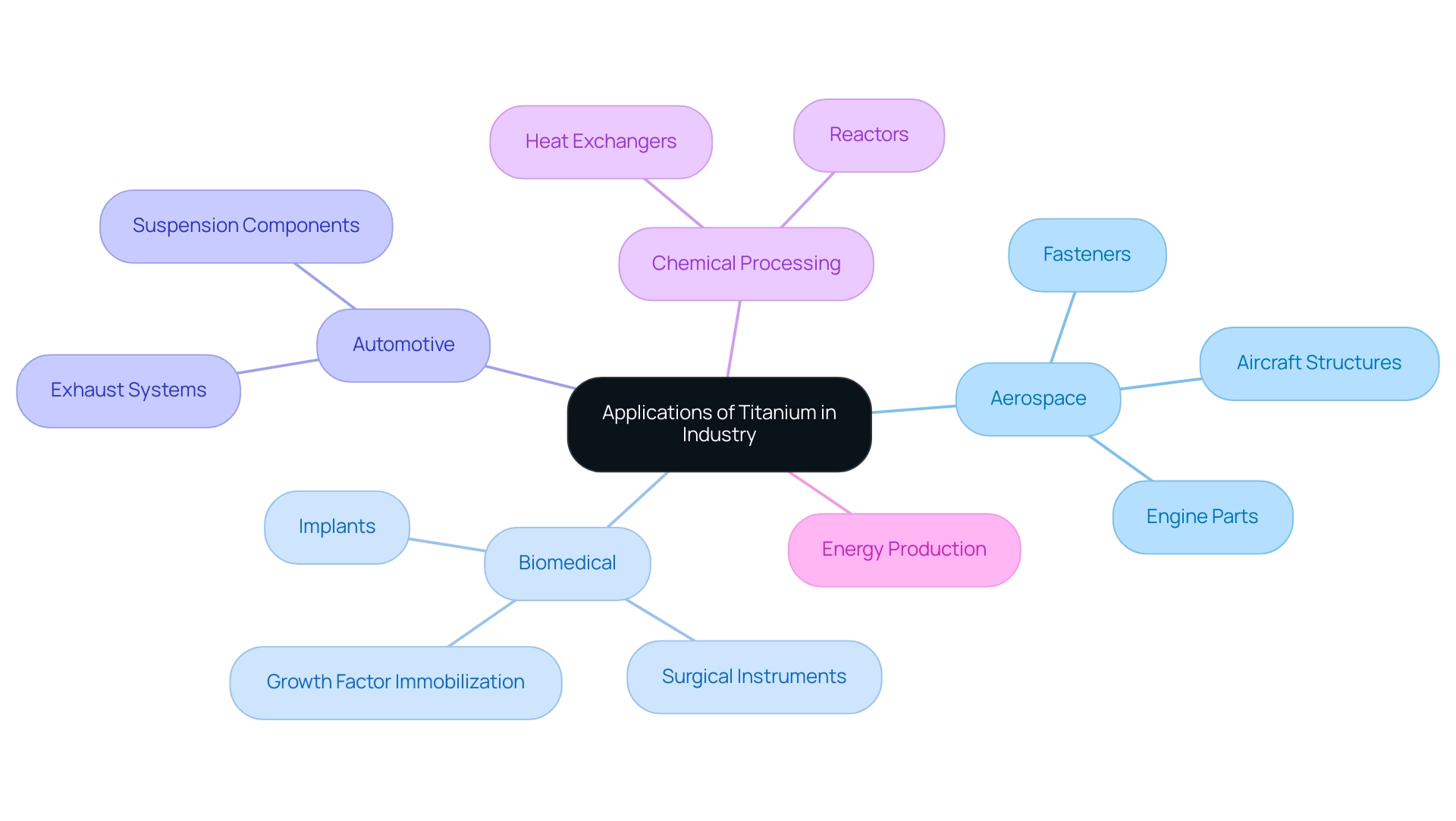
Comparative Analysis: Titanium vs. Other Materials
When assessing the strength to weight ratio of titanium in comparison to other substances such as aluminum, steel, and advanced composites, several critical factors emerge.
- Aluminum, although lighter, exhibits only about 64% of the conductivity of copper and has a lower strength-to-weight ratio, coupled with reduced corrosion resistance.
Conversely, steel is renowned for its high strength but comes with a considerable weight penalty, making it less ideal for applications where weight is a decisive factor.
Advanced composites boast impressive strength-to-weight ratios; however, they often involve higher costs and complexities concerning manufacturing and recycling processes.
Titanium, on the other hand, presents a compelling alternative because of its impressive strength to weight ratio. It offers superior strength and remarkable corrosion resistance at a moderate weight, demonstrating the strength to weight ratio of titanium, which makes it a preferred choice in environments where performance and reliability are paramount. Recent studies demonstrate the benefits of this metal over aluminum and steel, particularly in industries like automotive and aerospace, where the strength to weight ratio of titanium directly impacts efficiency and safety.
For example, Industrial Metal Service focuses on providing both metals and aluminum to manufacturers, guaranteeing access to high-quality materials without minimum order quantities. This practical support highlights the strategic importance of this metal in the procurement process.
As our founder, Jeff, emphasizes, “We pride ourselves on offering fair, efficient, trustworthy, knowledgeable, outstanding customer service.” This commitment not only reflects our dedication to customer satisfaction but also highlights the importance of knowledgeable sourcing in enhancing product performance across various industries. Furthermore, our services, including metal recycling and precise sawing, contribute to sustainability and efficiency in the supply chain, making titanium a smart choice for modern manufacturing.
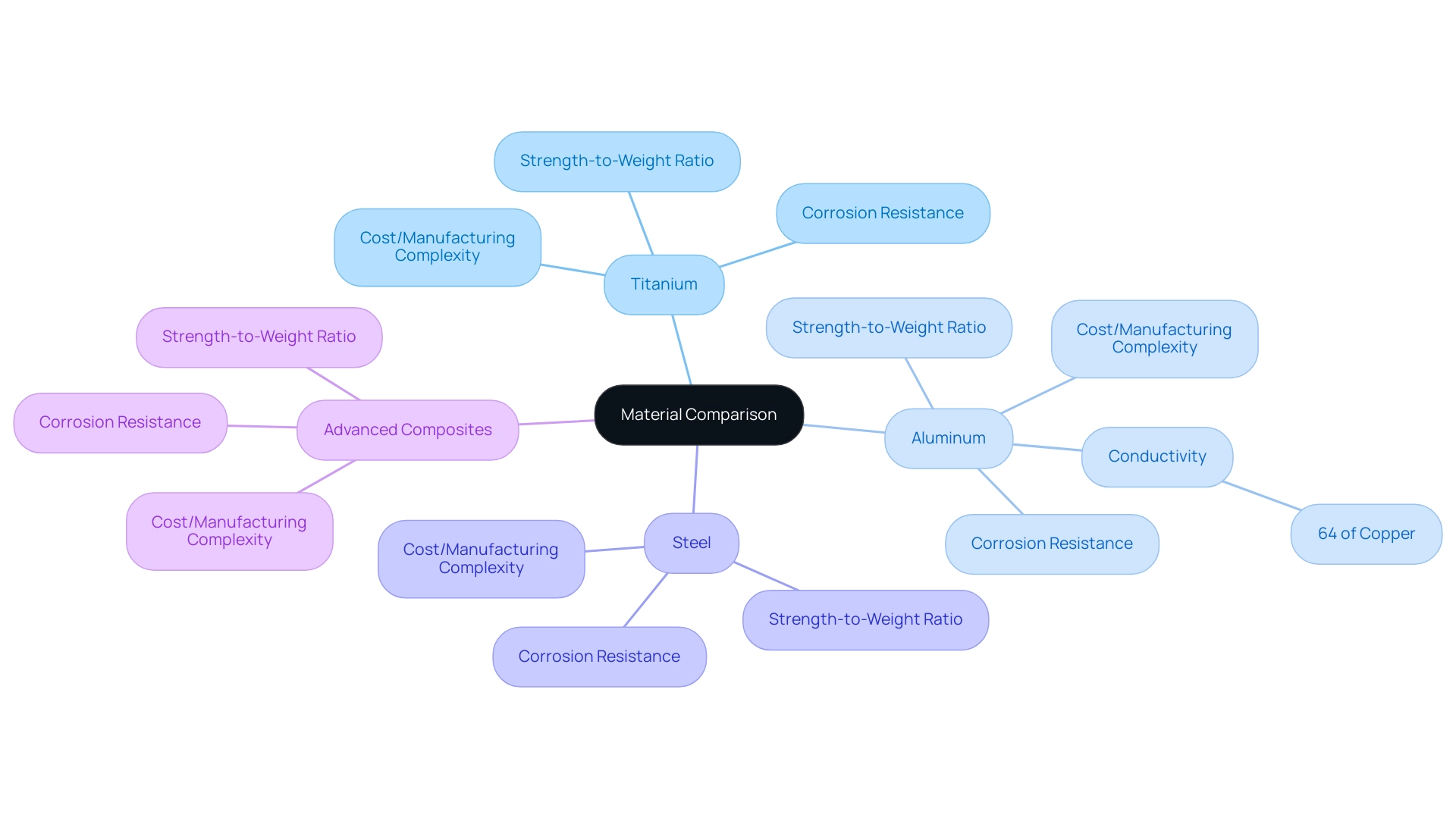
Future Trends in Titanium Usage
The trajectory of materials such as mica tape is poised for significant growth, driven by advancements in manufacturing technologies and creative uses in high-temperature environments. Mica insulation tape, for example, is intended for high-temperature resistance and electrical insulation, making it ideal for essential uses in electrical engineering. This specialized tape provides excellent flame resistance and dielectric strength, which are crucial for electrical uses requiring additional safety measures against fire hazards.
As industries progressively emphasize materials with a high strength to weight ratio of titanium, the importance of mica tape is anticipated to rise, highlighting its essential function in both current and upcoming uses. Furthermore, the aerospace sector is actively exploring new substances, including mica insulation products, designed to endure elevated temperatures and increased stress, significantly broadening their applicability. The growing interest in sustainability also extends to mica tape products, which promise to mitigate costs and minimize environmental impacts.
Overall, the integration of mica tape in high-performance applications aligns with the broader trends in material usage, highlighting its essential role alongside advancements in materials, particularly due to the strength to weight ratio of titanium.
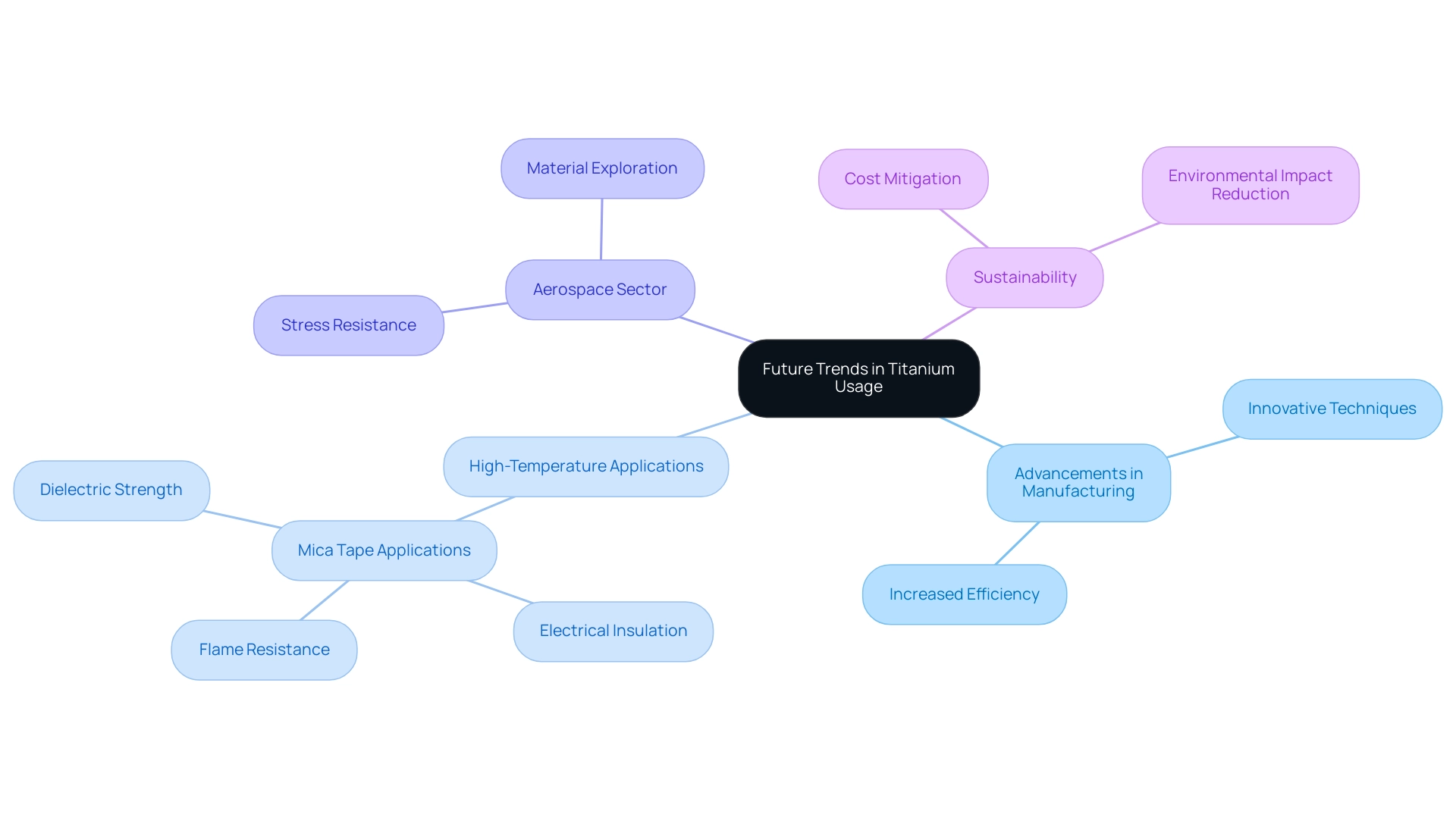
Conclusion
Titanium’s exceptional properties—strength, lightweight nature, and corrosion resistance—position it as a pivotal material across various industries, from aerospace to medical devices. Its impressive strength-to-weight ratio not only facilitates significant weight savings but also enhances operational performance, making it an invaluable asset in high-performance applications. As outlined, titanium’s applications span critical components in aircraft, high-performance vehicles, and medical implants, all of which underscore the material’s versatility and reliability in demanding environments.
In comparing titanium to alternatives such as aluminum and steel, it becomes evident that titanium offers a unique blend of advantages. While aluminum may be lighter, it lacks the necessary strength and corrosion resistance for many applications. Steel, though strong, presents weight challenges that can compromise efficiency. Titanium emerges as the optimal choice, providing superior performance without the drawbacks associated with other materials. This comparative analysis highlights the strategic importance of titanium in material selection, particularly for procurement managers aiming to optimize project outcomes.
Looking ahead, the future of titanium is promising, with ongoing advancements in manufacturing processes and a growing emphasis on sustainability. As industries continue to seek materials that not only meet performance requirements but also align with environmental goals, titanium’s role is expected to expand. Embracing titanium as a key material will not only enhance product performance but also contribute to the long-term success of projects across various sectors. By understanding and leveraging the multifaceted advantages of titanium, procurement managers can make informed decisions that drive innovation and efficiency in their respective fields.




